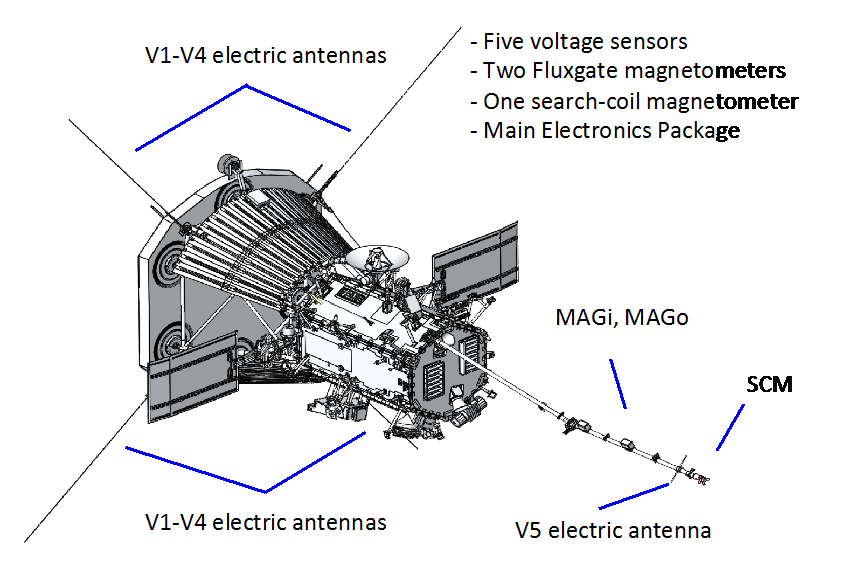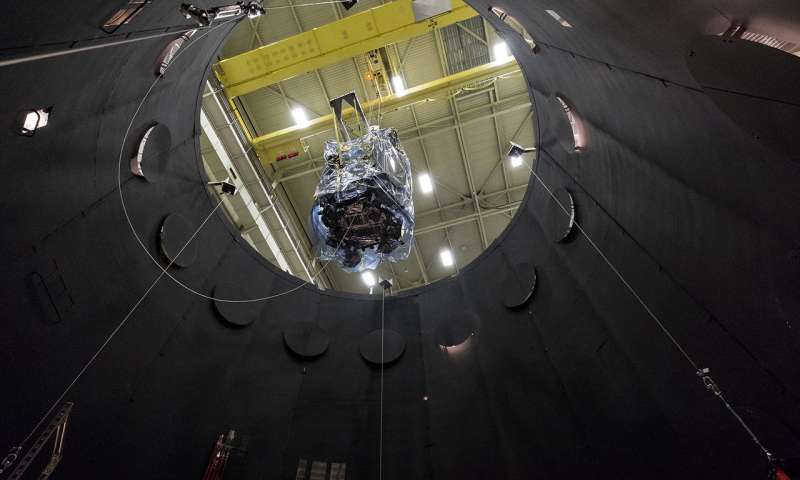NASA’s Parker Solar Probe mission has our sun in its sights, hoping to bring about a new understanding of the neighboring star. It will travel through the sun’s atmosphere, reaching closer to its surface than any previous spacecraft.
With such close proximity, the probe will face a bevy of extreme conditions, including severe heat and radiation. According to NASA, the spacecraft and its scientific instruments will be protected by a 4.5-inch-thick carbon-composite shield, which will need to survive temperatures soaring to 2,500°F.
The probe’s onboard electronics fall under four main investigative areas: fields experiment (FIELDS), integrated science investigation of the sun (IS☉IS), wide-field imager for solar probe (WISPR), and solar wind electrons alphas and protons (SWEAP) investigation.
Below you can see components that fall under the FIELDS category.

(Image Credit: NASA)
In order to test thermal efficiency, the Parker Solar Probe was recently lowered into a 40-foot-tall thermal vacuum chamber at NASA’s Goddard Space Flight Center. The spacecraft will spend seven weeks in the chamber, withstanding near-vacuum conditions, and severe hot and cold temperatures.
All of this is in preparation for its July 2018 launch aboard a Delta IV Heavy launch vehicle at NASA’s Kennedy Space Center in Florida. Until then, you can view the Parker Solar Probe entering the thermal vacuum chamber in the image below.

(Image Credit: NASA/JHUAPL/Ed Whitman)
Filed Under: Aerospace + defense




